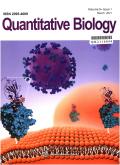Transformer-based DNA methylation detection on ionic signals from Oxford Nanopore sequencing data
IF 1.4
4区 生物学
Q4 MATHEMATICAL & COMPUTATIONAL BIOLOGY
引用次数: 0
Abstract
Background : Oxford Nanopore long-read sequencing technology addresses current limitations for DNA methylation detection that are inherent in short-read bisulfite sequencing or methylation microarrays. A number of analytical tools, such as Nanopolish, Guppy/Tombo and DeepMod, have been developed to detect DNA methylation on Nanopore data. However, additional improvements can be made in computational efficiency, prediction accuracy, and contextual interpretation on complex genomics regions (such as repetitive regions, low GC density regions). Method : In the current study, we apply Transformer architecture to detect DNA methylation on ionic signals from Oxford Nanopore sequencing data. Transformer is an algorithm that adopts self-attention architecture in the neural networks and has been widely used in natural language processing. Results : Compared to traditional deep-learning method such as convolutional neural network (CNN) and recurrent neural network (RNN), Transformer may have specific advantages in DNA methylation detection, because the self-attention mechanism can assist the relationship detection between bases that are far from each other and pay more attention to important bases that carry characteristic methylation-specific signals within a specific sequence context. Conclusion : We demonstrated the ability of Transformers to detect methylation on ionic signal data.基于变压器的DNA甲基化检测来自牛津纳米孔测序数据的离子信号
背景:牛津纳米孔长读测序技术解决了目前DNA甲基化检测的局限性,这些局限性是短读亚硫酸盐测序或甲基化微阵列所固有的。许多分析工具,如Nanopolish、Guppy/Tombo和DeepMod,已经被开发出来用于检测纳米孔数据上的DNA甲基化。然而,在复杂基因组区域(如重复区域、低GC密度区域)的计算效率、预测准确性和上下文解释方面可以进行额外的改进。方法:在本研究中,我们应用Transformer架构检测来自Oxford Nanopore测序数据的离子信号的DNA甲基化。Transformer是一种采用神经网络自关注架构的算法,在自然语言处理中得到了广泛的应用。结果:与卷积神经网络(convolutional neural network, CNN)、递归神经网络(recurrent neural network, RNN)等传统深度学习方法相比,Transformer在DNA甲基化检测方面可能具有特定优势,因为其自注意机制可以辅助距离较远的碱基之间的关系检测,更关注特定序列背景下携带甲基化特异性信号的重要碱基。结论:我们证明了transformer在离子信号数据上检测甲基化的能力。
本文章由计算机程序翻译,如有差异,请以英文原文为准。
求助全文
约1分钟内获得全文
求助全文
来源期刊

Quantitative Biology
MATHEMATICAL & COMPUTATIONAL BIOLOGY-
CiteScore
5.00
自引率
3.20%
发文量
264
期刊介绍:
Quantitative Biology is an interdisciplinary journal that focuses on original research that uses quantitative approaches and technologies to analyze and integrate biological systems, construct and model engineered life systems, and gain a deeper understanding of the life sciences. It aims to provide a platform for not only the analysis but also the integration and construction of biological systems. It is a quarterly journal seeking to provide an inter- and multi-disciplinary forum for a broad blend of peer-reviewed academic papers in order to promote rapid communication and exchange between scientists in the East and the West. The content of Quantitative Biology will mainly focus on the two broad and related areas: ·bioinformatics and computational biology, which focuses on dealing with information technologies and computational methodologies that can efficiently and accurately manipulate –omics data and transform molecular information into biological knowledge. ·systems and synthetic biology, which focuses on complex interactions in biological systems and the emergent functional properties, and on the design and construction of new biological functions and systems. Its goal is to reflect the significant advances made in quantitatively investigating and modeling both natural and engineered life systems at the molecular and higher levels. The journal particularly encourages original papers that link novel theory with cutting-edge experiments, especially in the newly emerging and multi-disciplinary areas of research. The journal also welcomes high-quality reviews and perspective articles.
 求助内容:
求助内容: 应助结果提醒方式:
应助结果提醒方式:


